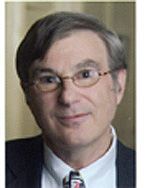Stories of the Law: Narrative Discourse and the Construction of Authority in the Mishnah by Moshe Simon-Shoshan, Oxford University Press, New York; ISBN 978-0-19-935638-6 ©2013, $27.95, p. 287, including notes and bibliography
By Fred Reiss, Ed.D.

WINCHESTER, California– The Romans, who destroyed the Second Temple in 70 CE, subsequently expelled the Jews from Jerusalem after crushing the Bar Kokhba revolt in 135 CE. They enacted laws prohibiting the teaching of Torah, observing the Sabbath, and performing circumcision. In addition, numerous rabbis were put to horrible death by the Emperor Hadrian for disobeying these Roman laws.
Many of the remaining rabbis, fearing that Judaism’s oral traditions would be lost forever, felt a pressing need to record their legal discussions and rulings. The result of this collaborative effort is the Mishnah, the written compilation of Judaism’s practices and conventions taught heretofore only by word of mouth, as seen through the eyes of first and second century CE pharisaic rabbis. The success of their collaboration is readily apparent in that today pharisaic Judaism is normative Judaism.
These rabbis, known as collectively as Tannaim, met in conclaves, first coming together in the city of Yavne, along Israel’s central coast, then later in the cities of Usha, Beth Shearim, and Sepphoris, all of which are in the Galilee. The Tannaim assembled to present and debate actual cases whose final decisions became Judaism’s equivalent to America’s judicial rulings. The Mishnah is a law book.
Rabbi Yehuda Ha-Nasi completed the redacting of these rabbinic arguments and legal decisions in the early part of the third century CE, and in doing so created the Mishnah, six large volumes, or orders, each of which is divided into seven to twelve tractates. Taken together, these sixty-three tractates provide a rabbinic response, and a basis for future responses, for actions in nearly every aspect of Jewish life—from dietary laws to women; from tort liability to holiness.
In Stories of the Law, Moshe Simon-Shoshan, a teacher at the Rothberg International School of the Hebrew University of Jerusalem, ponders why is there so much folklore scattered throughout a compendium of Jewish laws? What is their nature? What is their function? He cogently argues that scholars distinguish between halakhah (Jewish law) and aggadah (Jewish legend), but this ought not to be the case. Mishnaic legends must be examined not only in the broad context of Jewish fables, but also as part and parcel of the rabbinic halakhah under discussion. For Simon-Shoshan the redacting of the Mishnah into its present form was as much about firmly establishing traditional and legal rabbinic authority as was about enumerating case law.
Simon-Shoshan uses part one of Stories of the Law to examine samples of the various levels of folklore presented in the Mishnah. He measures the “narrativity” of these ancient anecdotes across a broad range, from tales that lack dynamism and specificity, which he calls narratives, to legends that possess a great deal of both dynamism and specificity, which he calls stories. After a detailed examination, he concludes that stories appear in one of three types of genres in the Mishnah: the exemplum, the case study, and the etiological story.
Exempla are stories that begin something like “It once happened…,” and proceed to tell the story of one or more righteous people whose actions can be used as precedents for proper religious behavior. Case studies also begin in the form “It once happened…,” and then describe an event or practice whose legal status is ambiguous. Case studies conclude with a rabbinic ruling. Etiological stories tell the tale of the origins of a rabbinic ruling, and are often used to show the continuation, rather than the creation, of the rabbinic right-to-rule.
In part two, Simon-Shoshan, employing his rubrics from part one, provides numerous illustrations of Mishnaic narratives and stories, presenting lucid explanations within their legal, political, historical, and aggadic contexts.
Stories of the Law occasionally bogs down in technical jargon and definitions that might leave some in the lay public scratching their heads. But, Simon-Shoshan repeats his ideas and terminology often enough so that the broad concepts are easily discernible. The reader comes away well satisfied with the author’s detailed analysis, and with a deeper appreciation, understanding, and awareness of the power of stories in Judaism’s most powerful reference book.
*
Dr. Fred Reiss is a retired public and Hebrew school teacher and administrator. He is the author of The Standard Guide to the Jewish and Civil Calendars; Ancient Secrets of Creation: Sepher Yetzira, the Book that Started Kabbalah, Revealed; and a fiction book, Reclaiming the Messiah. The author can be reached via fred.reiss@sdjewishworld.com.